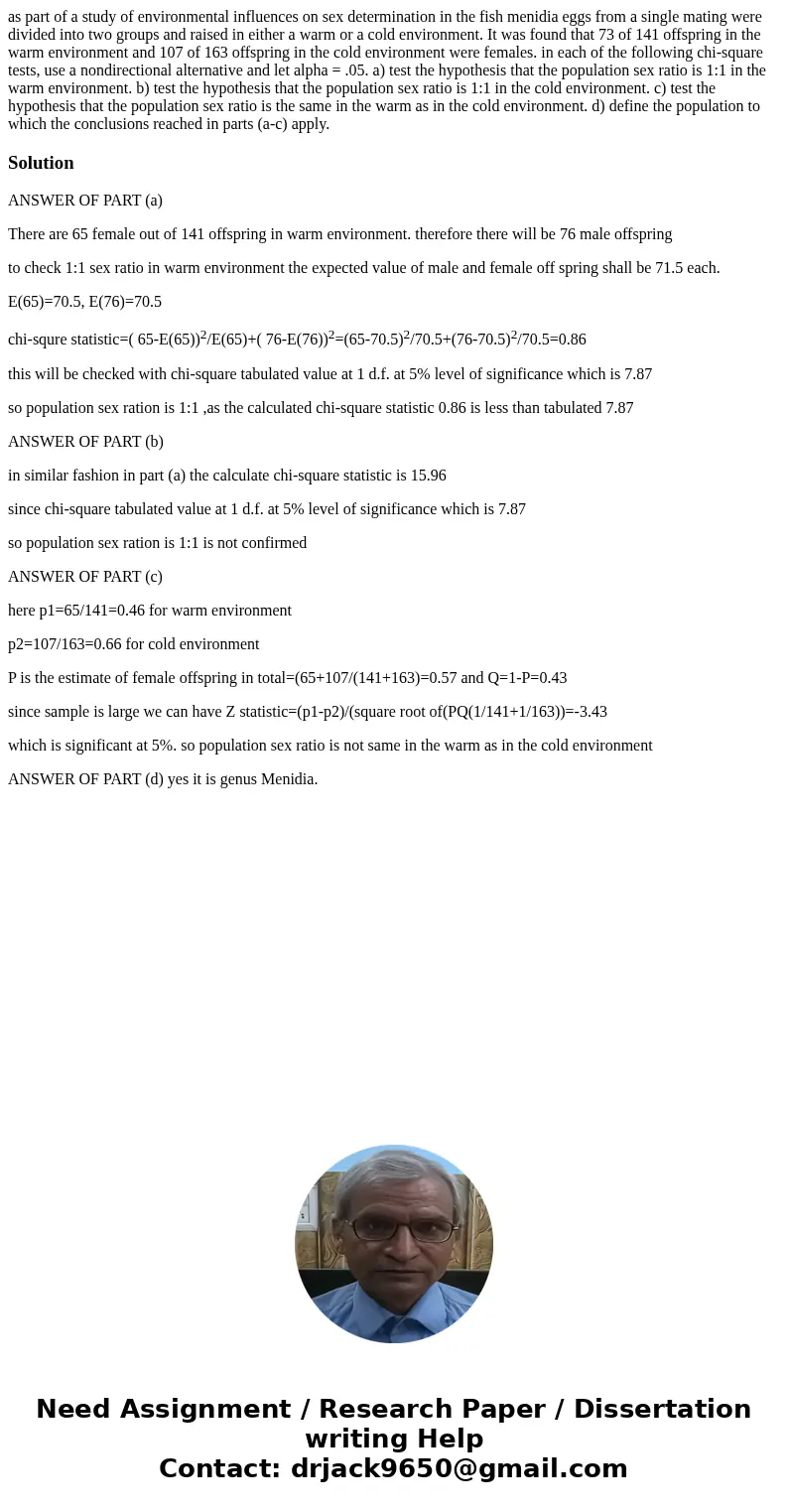as part of a study of environmental influences on sex determ
as part of a study of environmental influences on sex determination in the fish menidia eggs from a single mating were divided into two groups and raised in either a warm or a cold environment. It was found that 73 of 141 offspring in the warm environment and 107 of 163 offspring in the cold environment were females. in each of the following chi-square tests, use a nondirectional alternative and let alpha = .05. a) test the hypothesis that the population sex ratio is 1:1 in the warm environment. b) test the hypothesis that the population sex ratio is 1:1 in the cold environment. c) test the hypothesis that the population sex ratio is the same in the warm as in the cold environment. d) define the population to which the conclusions reached in parts (a-c) apply.
Solution
ANSWER OF PART (a)
There are 65 female out of 141 offspring in warm environment. therefore there will be 76 male offspring
to check 1:1 sex ratio in warm environment the expected value of male and female off spring shall be 71.5 each.
E(65)=70.5, E(76)=70.5
chi-squre statistic=( 65-E(65))2/E(65)+( 76-E(76))2=(65-70.5)2/70.5+(76-70.5)2/70.5=0.86
this will be checked with chi-square tabulated value at 1 d.f. at 5% level of significance which is 7.87
so population sex ration is 1:1 ,as the calculated chi-square statistic 0.86 is less than tabulated 7.87
ANSWER OF PART (b)
in similar fashion in part (a) the calculate chi-square statistic is 15.96
since chi-square tabulated value at 1 d.f. at 5% level of significance which is 7.87
so population sex ration is 1:1 is not confirmed
ANSWER OF PART (c)
here p1=65/141=0.46 for warm environment
p2=107/163=0.66 for cold environment
P is the estimate of female offspring in total=(65+107/(141+163)=0.57 and Q=1-P=0.43
since sample is large we can have Z statistic=(p1-p2)/(square root of(PQ(1/141+1/163))=-3.43
which is significant at 5%. so population sex ratio is not same in the warm as in the cold environment
ANSWER OF PART (d) yes it is genus Menidia.

 Homework Sourse
Homework Sourse